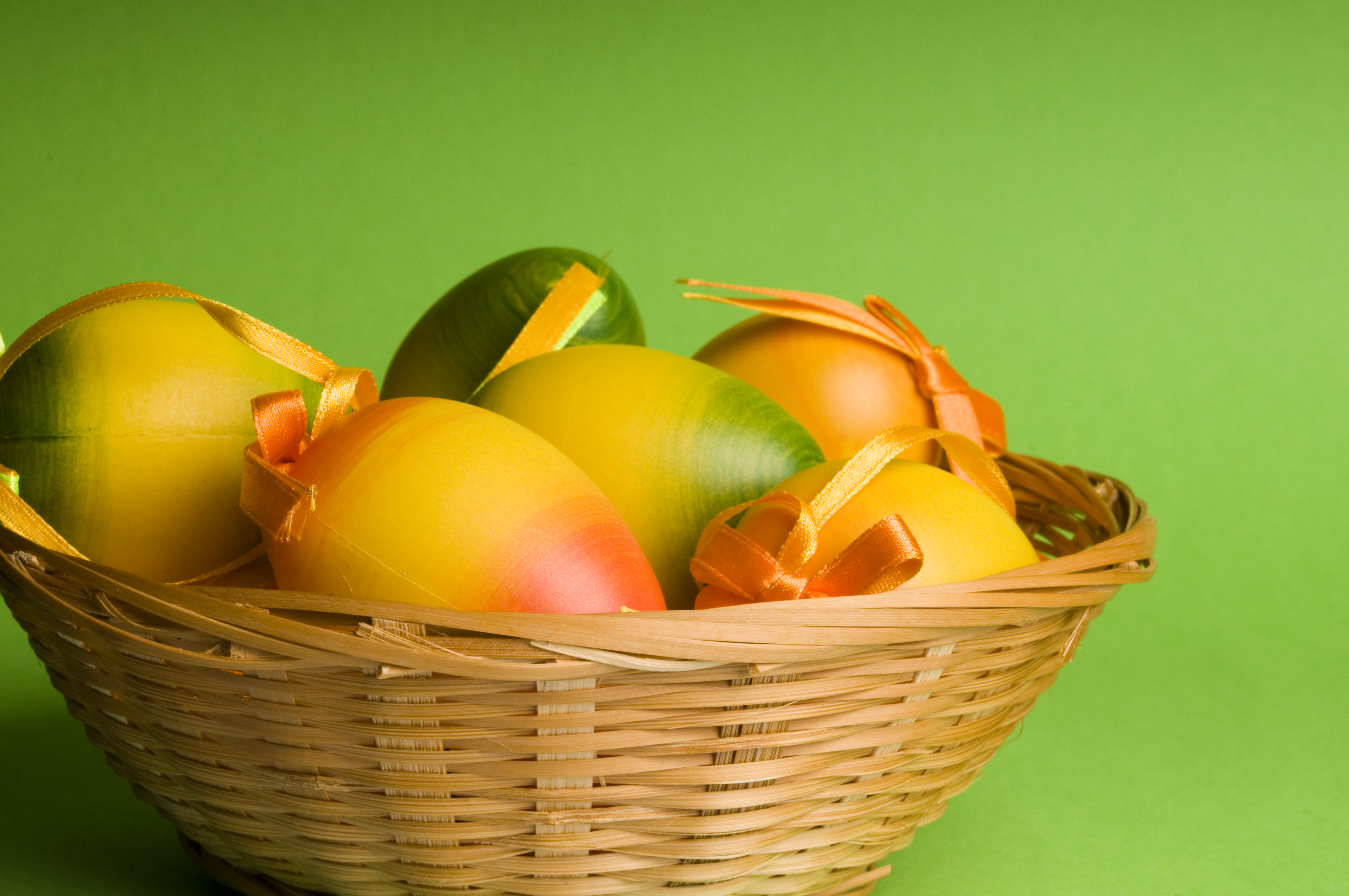
Guest Writer: Debbie Stephenson
With Easter around the corner (April 20th) my thoughts go to chocolate bunnies and brightly colored eggs. I have happy memories of waking up on Easter morning and running downstairs to find a basket full of both. I gobbled them up and never once thought about the sugar in the chocolate or whether or not my parents handled the eggs correctly so that I would not get Salmonella. Now, as an adult, I think more about my health, food safety and not getting sick.
Eggs provide us with great nutrition. They are low in calories and a great source of protein. They contain iron, vitamins, minerals and carotenoids. With all of this goodness we have to make sure that we store and cook them properly. Infants, young children, older adults, pregnant women and people with weakened immune systems are at a greater risk of a Salmonella infection.
According to the USDA Food Safety Information sheet (Shell Eggs From Farm to Table), the following are some safety tips to follow:
- At the store, make sure the eggs are refrigerated.
- Choose eggs with a clean, uncracked shell.
- Check the date on the package and do not buy if out-of-date.
- Refrigerate as soon as possible after you purchase. (Refrigerated eggs should not be left out more than 2 hours.) Place eggs in the coldest part of the refrigerator-not the door.
- Always cook eggs until both the white and yolk are firm.
- Dishes containing eggs should be cooked to an internal temperature of 160 degrees F. Use a food thermometer to check the temperature.
When decorating eggs:
- Dyeing eggs: After hard cooking eggs, dye them and return them to the refrigerator within 2 hours. If eggs are to be eaten, use a food-safe coloring. As with all foods, persons dying the eggs should wash their hands before and after handling the eggs.
- Hunting eggs: It is not recommended to use hard cooked eggs that have been laying on the ground, because they can pick up bacteria, especially if the shells are cracked. If the shells crack, bacteria could contaminate the inside. Eggs should be hidden in places that are protected from dirt, moisture, pets, and other sources of bacteria. The total time for hiding and hunting eggs should not exceed 2 hours. (1 hour if temperature is 90 degrees or higher) The “found” eggs must be washed, re-refrigerated and eaten with 7 days of cooking.
What do you remember getting in your basket?
Chocolate bunnies? Peeps? Jelly Beans? Skittles? Marshmallow eggs?
What do you put in the basket for your children or grandchildren? Do you include any healthier options?
A few suggestions might be bags of carrots, gold fish crackers (can also get cheddar bunnies), strawberries dipped in dark chocolate and plastic eggs filled with cheerios. The basket does not need to be all food related. What about a jump rope, a baseball or softball, sidewalk chalk, bubbles or a kite? Add anything to get your kids up and moving.
What healthy ideas do you have for an Easter basket? Please leave a comment and let me know!
 For more information, Debbie Stephenson may be reached at NC Cooperative Extension by calling 910-893-7530 or debbie_stephenson@nscu.edu.
For more information, Debbie Stephenson may be reached at NC Cooperative Extension by calling 910-893-7530 or debbie_stephenson@nscu.edu.
This was also posted on Voices into Action’s website.
